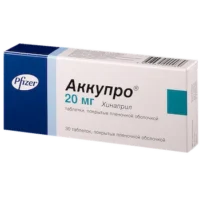Description
Ramizes (ramipril) Tablets 5 mg. №30
Ingredients:
- Each tablet contains 5 mg of ramipril as the active ingredient.
Dosage:
- The usual dose is one tablet daily. It is important to follow the instructions provided by your healthcare provider.
Indications:
- Ramizes tablets are indicated for the treatment of hypertension and congestive heart failure. They can also help improve survival after a heart attack.
Contraindications:
- Do not take Ramizes if you are pregnant, have a history of angioedema, or are allergic to ramipril. It is important to consult with your doctor before starting this medication.
Directions:
- Take one tablet by mouth with or without food, as directed by your healthcare provider. It is essential to take the medication regularly to experience its full benefits.
Scientific Evidence:
- Ramipril, the active ingredient in Ramizes tablets, is an angiotensin-converting enzyme (ACE) inhibitor. ACE inhibitors have shown significant benefits in managing hypertension, heart failure, and post-myocardial infarction care. Research in the Journal of the American College of Cardiology demonstrated the efficacy of ramipril in reducing cardiovascular events and improving outcomes in heart failure patients.
Additional Information:
- Ramizes tablets effectively lower blood pressure, reduce the risk of cardiovascular events, and improve overall heart health. Clinical trials have highlighted the role of ramipril in managing hypertension and preventing heart failure progression. Adhering to the prescribed dosage and regular follow-ups with your healthcare provider are crucial for monitoring progress and adjusting treatment if necessary.




